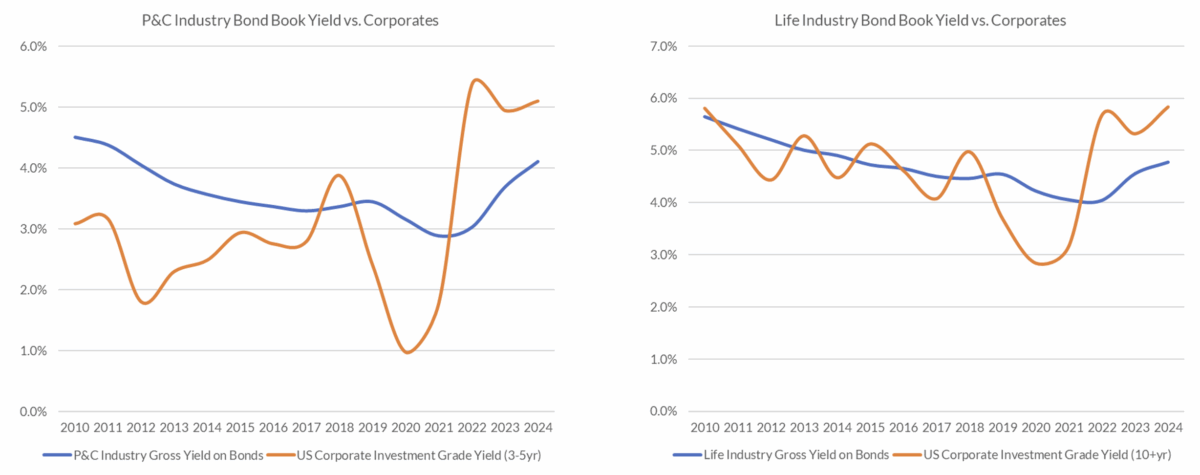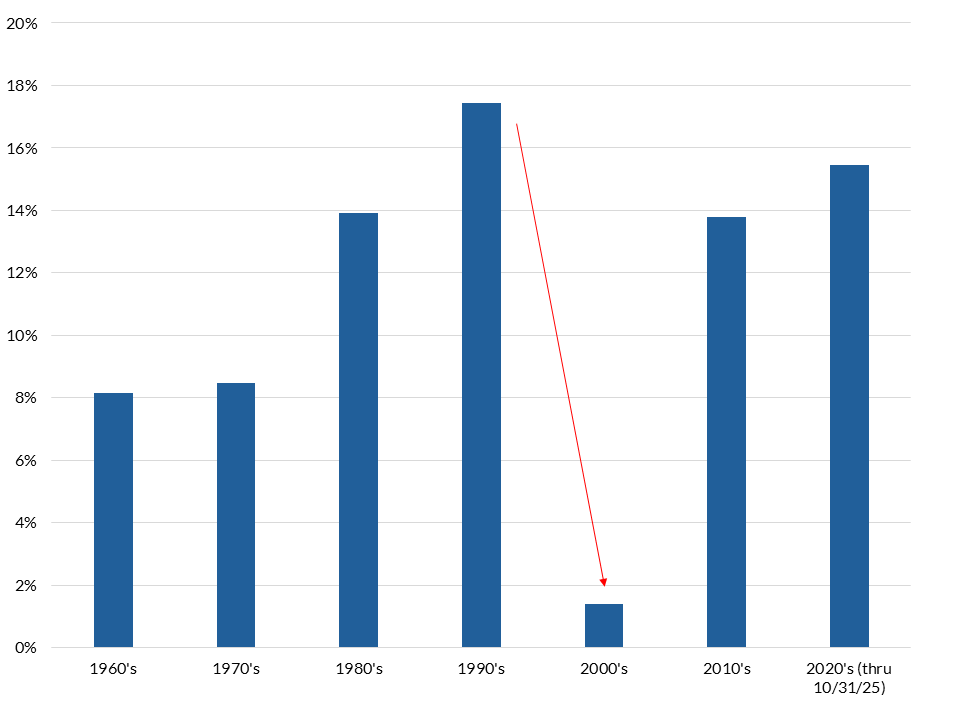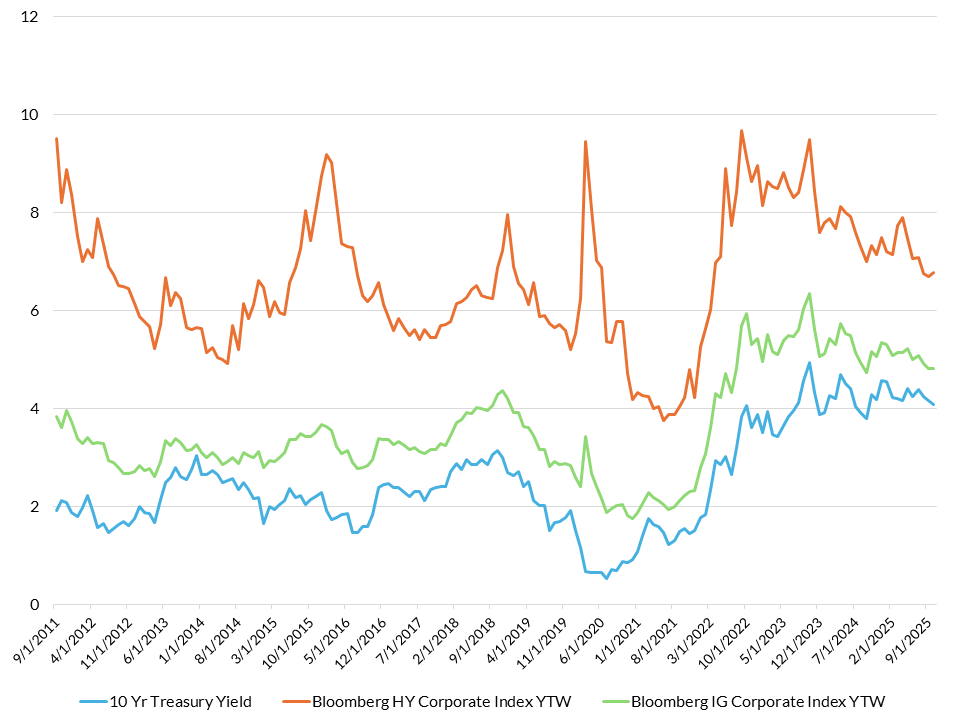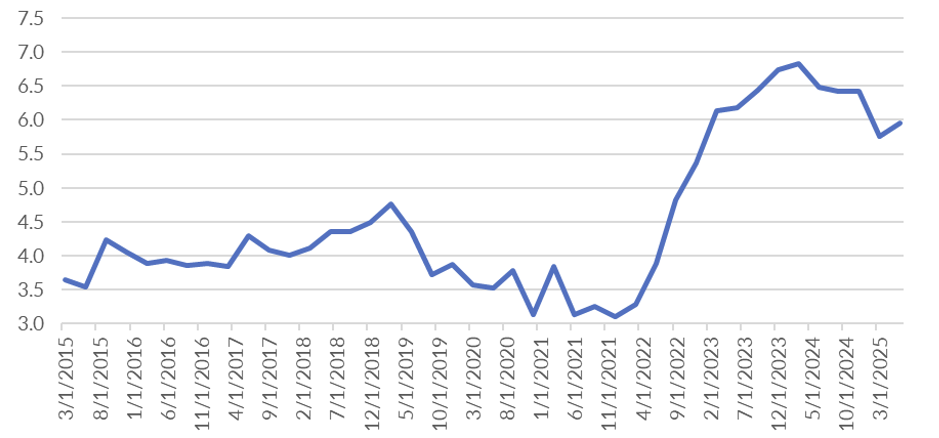insight
Strategies to Strengthen Insurance Portfolios in a Shifting Market
November 20, 2025
Download PDFFinancial market uncertainty is a constant, but its complexity has grown. The globalized economy, evolving geopolitics, and rapid technological change all heighten volatility for insurers. While uncertainty cannot be eliminated, insurers can manage it through three strategic priorities: capital preservation, yield optimization, and portfolio diversification with flexibility.
Capitalize preservation demands strict discipline, utilizing duration matching, liquidity management, and stress testing. This approach protects against risks that might threaten solvency. However, with yield environments shifting from prolonged lows to rapid tightening cycles, insurers must also seek returns by allocating to higher yielding asset classes, including high yield debt, commercial mortgage loans, and private credit, while remaining mindful of risk tolerance. Diversification, across asset classes and time horizons, is the primary defense against volatility. It promotes innovation and resilient performance, especially when familiar strategies like investment grade bonds are insufficient.
Investment Trends and Industry Growth
The insurance industry’s invested asset base has expanded steadily, surpassing $9 trillion. Growth in insurer earnings and surplus as it relates to investment portfolios is linked to equity market gains, benign credit conditions, and improved recurring investment income as new money has been put to work at higher interest rates. Book yield, which measures the portfolio’s earnings power, declined to historic lows in 2021 but have since rebounded, driven by rising new money yields. Average book yields now exceed 4% for Property & Casualty insurers and are projected to surpass 5% for Life and Annuity writers by the end of 2025. Recent yield curve steepening encourages investment in longer duration assets for additional return.

The Necessity for Diversification
Equity allocations among P&C insurers have increased markedly, rising from 11% of investments in 2010 to 18% in 2024. Equities have been remarkably resilient, despite repeated shocks, now sitting close to all-time highs buoyed by major themes such as artificial intelligence. For insurers, diversified equity exposure, through exchange-traded funds (ETFs) or individual equities, has been a lifeline, especially during the low‑rate environment of the 2010s. For much of the last 15 years, the single biggest driver of an insurer’s investment results was simply how much exposure they had to U.S. equities. Their strong run raises the likelihood of mean reversion over the next cycle. U.S. equities delivered 14% average annual returns in the past 15 years, significantly above the historical norm of 8–10%.
S&P 500 Avg Annual Return by Decade

If long-term equity returns revert to their historical range of 8–10% annually, the comparative advantage of equities diminishes. In this scenario, stable bond yields of 8% with more favorable capital treatment become increasingly attractive. Unless there is a strong conviction that equity markets will repeat the exceptional performance of the last decade, insurers should view this as a timely opportunity to further diversify their portfolios.
10yr US Treasury Yield (%)

There has been increased allocation to private credit within insurance portfolios, especially among larger life insurers. However, this trend remains concentrated and has yet to see broad industry adoption. Notably, many high-yielding assets, such as commercial mortgage loans, which have recently offered life insurers yields in excess of 6% with investment grade credit quality, are still underutilized by smaller insurers. For example, only about 7% of P&C companies with less than $1 billion in assets currently have any exposure, highlighting a significant opportunity gap and the uneven pace of adoption across the sector.
Avg Yield on Insurer Cmmcl Mtg Loan Purchases (%)

Portfolio Construction and Strategic Readiness
Diversification is a cornerstone of effective risk management and long-term investment success. By allocating capital across a broad range of asset classes, sectors, and geographies, investors can mitigate risk exposure without necessarily sacrificing return potential. A diversified portfolio, constructed by combining assets with low or negative correlations, is the most powerful tool available to manage volatility, especially during periods of heightened uncertainty.
Through diversification, portfolios become more resilient to sudden market shocks and extreme events, minimizing the impact of any single loss and supporting steadier, more reliable growth over time. Importantly, effective diversification is not simply a matter of adding more asset types, it is about thoughtfully building a mix of holdings with differentiated responses to economic and market conditions, thereby optimizing the risk-return profile.
Reviewing and adjusting asset allocation is essential, as risk exposures can shift and new opportunities or vulnerabilities may emerge over time. When diversification is implemented strategically, investors benefit from enhanced downside protection and the potential for improved risk-adjusted returns throughout changing market cycles. Reviewing asset allocation regularly, every 2–3 years or after major business changes, and having predetermined rebalancing protocols is crucial. Insurers must overcome the comfort of the familiar, embracing new asset classes to improve risk-adjusted returns to position portfolios for long-term success.
Despite the overhang of uncertainty, the economy has been remarkably resilient and, while slowing, is expected to continue to grow. This backdrop may bring a modest reduction in new money yields as the Fed continues to cut rates, but we anticipate continued improvement in book yields for bond portfolios and a favorable credit backdrop from strong fundamentals.
Conclusion
Eliminating uncertainty is impossible, but preparing for it is essential. By focusing on disciplined risk management, yield optimization, and strategic diversification, insurance companies can transform uncertainty into an opportunity for growth and resilience in a changing market.
Disclaimer: Asset Allocation & Management Company, LLC (AAM) is an investment adviser registered with the Securities and Exchange Commission, specializing in fixed-income asset management services for insurance companies. Registration does not imply a certain level of skill or training. This information was developed using publicly available information, internally developed data and outside sources believed to be reliable. While all reasonable care has been taken to ensure that the facts stated and the opinions given are accurate, complete and reasonable, liability is expressly disclaimed by AAM and any affiliates (collectively known as “AAM”), and their representative officers and employees. This report has been prepared for informational purposes only and does not purport to represent a complete analysis of any security, company or industry discussed. Any opinions and/or recommendations expressed are subject to change without notice and should be considered only as part of a diversified portfolio. Any opinions and statements contained herein of financial market trends based on market conditions constitute our judgment. This material may contain projections or other forward-looking statements regarding future events, targets or expectations, and is only current as of the date indicated. There is no assurance that such events or targets will be achieved, and may be significantly different than that discussed here. The information presented, including any statements concerning financial market trends, is based on current market conditions, which will fluctuate and may be superseded by subsequent market events or for other reasons. Although the assumptions underlying the forward-looking statements that may be contained herein are believed to be reasonable they can be affected by inaccurate assumptions or by known or unknown risks and uncertainties. AAM assumes no duty to provide updates to any analysis contained herein. A complete list of investment recommendations made during the past year is available upon request. Past performance is not an indication of future returns. This information is distributed to recipients including AAM, any of which may have acted on the basis of the information, or may have an ownership interest in securities to which the information relates. It may also be distributed to clients of AAM, as well as to other recipients with whom no such client relationship exists. Providing this information does not, in and of itself, constitute a recommendation by AAM, nor does it imply that the purchase or sale of any security is suitable for the recipient. Investing in the bond market is subject to certain risks including market, interest-rate, issuer, credit, inflation, liquidity, valuation, volatility, prepayment and extension. No part of this material may be reproduced in any form, or referred to in any other publication, without express written permission.